10 YouTrack Alternatives and Competitors in 2025

Sorry, there were no results found for “”
Sorry, there were no results found for “”
Sorry, there were no results found for “”
In the realm of project management, Murphy’s Law often holds true: what can go wrong, will. Hence, proper preparation is key, and that includes having the right tool to track any potential issues. ?️
YouTrack has gained popularity due to its versatility. It helps you manage project tasks and timelines effectively. At the same time, it lets you log, categorize, and prioritize issues ranging from software bugs to customer complaints or even internal inquiries.
It’s particularly beneficial for software development teams, customer service departments, and any group that must juggle complex projects while dealing with many issues.
But if YouTrack’s blend of project management and issue tracking is not your cup of tea, you might be looking for a tool with better mobile or integration capabilities. That’s where we step in!
We’ve put together the top 10 YouTrack alternatives in 2024, examining their features, pricing, and user ratings. Our guide will help you select the perfect tool to skyrocket your business.
When looking for alternatives to YouTrack, it’s essential to consider the following key qualities:
With these crucial elements in mind, let’s explore the top 10 YouTrack alternatives available today. Whether in software development or digital marketing, these tools will sprinkle some magic dust on your day-to-day workflows to help you manage your teams and projects more efficiently. ✨
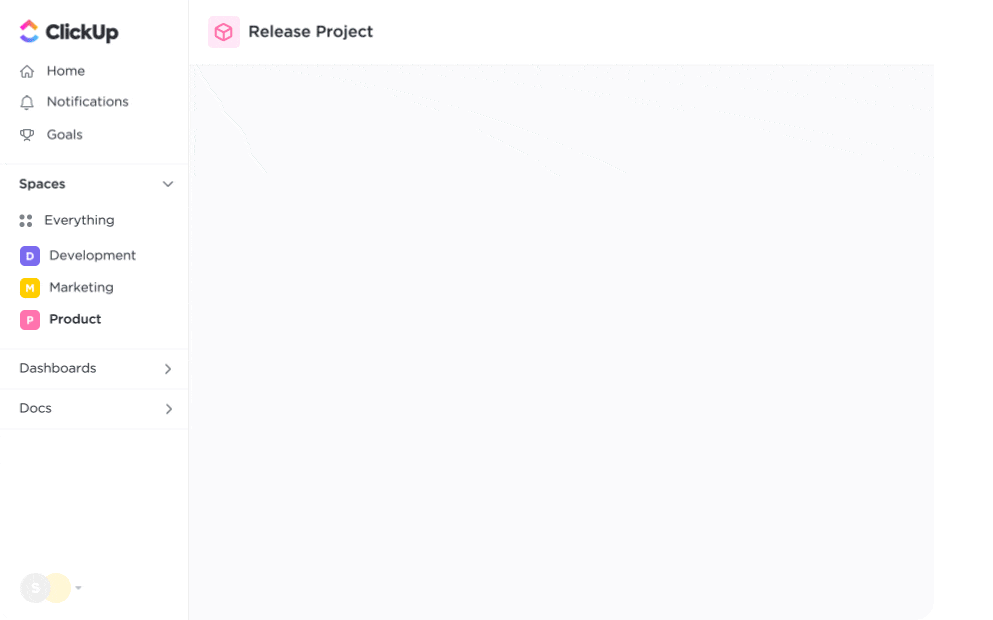
ClickUp is a powerful, all-in-one project management tool with free issue-tracking templates designed to organize, prioritize and resolve problems effectively. Its wall-to-wall solution, armed with a scalable hierarchy infrastructure, effectively handles complex projects by breaking them into manageable tasks and subtasks.
The standout feature, however, is ClickUp AI. It houses a smart AI Toolbar that generates written content tailored to your needs, whether it’s a technical report, a team update, or a social media post. What’s more, ClickUp’s AI project management tool assists with automation, taking over tasks like scheduling, roadmap creation, and more. It’s like having a personal, highly efficient project manager who’s available around the clock. ⏰
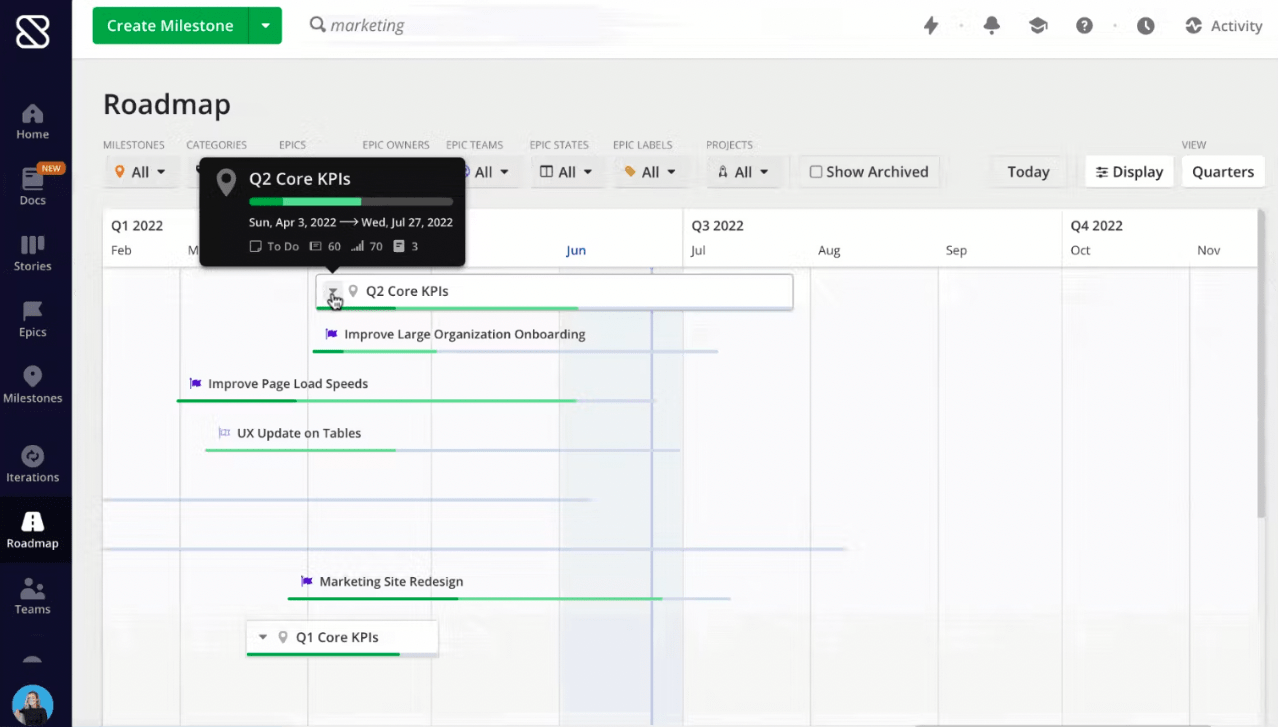
Designed with software development teams in mind, Shortcut offers an elegant solution for project management and issue tracking. Its clean, Kanban-style interface helps prevent the formation of data silos, which often keep information tucked away within specific groups and hamper smooth collaboration. Shortcut’s mission is to tear down these walls, opening a space where teams can seamlessly connect, share ideas, and work together toward their goals. ?
Shortcut organizes work by grouping Stories, the basic task units, into Epics, which represent broader initiatives. This structure is especially useful for cross-functional teams, as Stories can belong to different projects and workflows. Finally, these Epics roll up into Milestones, offering a high-level progress overview.
*All listed prices refer to the yearly billing model

Built using the Ruby on Rails framework, Redmine stands out as a versatile, open-source project management platform with features like Gantt charts, issue tracking, and more. It’s particularly beneficial to agile teams, as it enables the integration of plugins that support Scrum project management.
The tool lets you bind an issue to a project, a user, or a product version. It also provides a detailed view of the progress made to resolve a problem. Its “Related Issues” functionality allows developers to link issues based on various relationships such as duplicates, blocks, precedes, and follows, thereby preventing redundancy and promoting workflow simplicity.
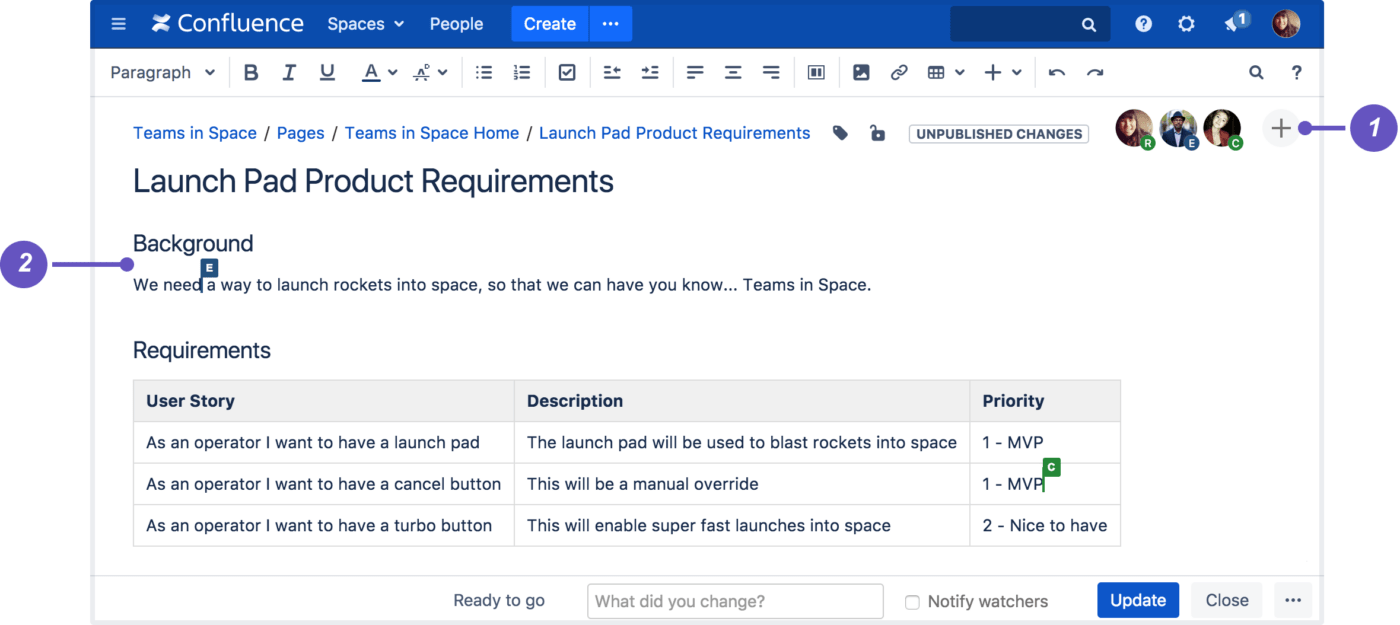
Crafted by Atlassian, a renowned software company, Confluence is not just a bug tracking software. Its superpower lies in combining the creation of documents, organization of knowledge, and project collaboration in one centralized workspace.
Its user-friendly text editor, pre-built templates, and audit trails make Confluence one of the best platforms for documenting and tracking team projects. Its real-time editing feature is complemented by an intuitive commenting system, allowing inline and page comments, likes, and visual elements such as images, GIFs, and emojis. When team members are tagged or assigned a task, notifications ensure everyone stays in the loop.
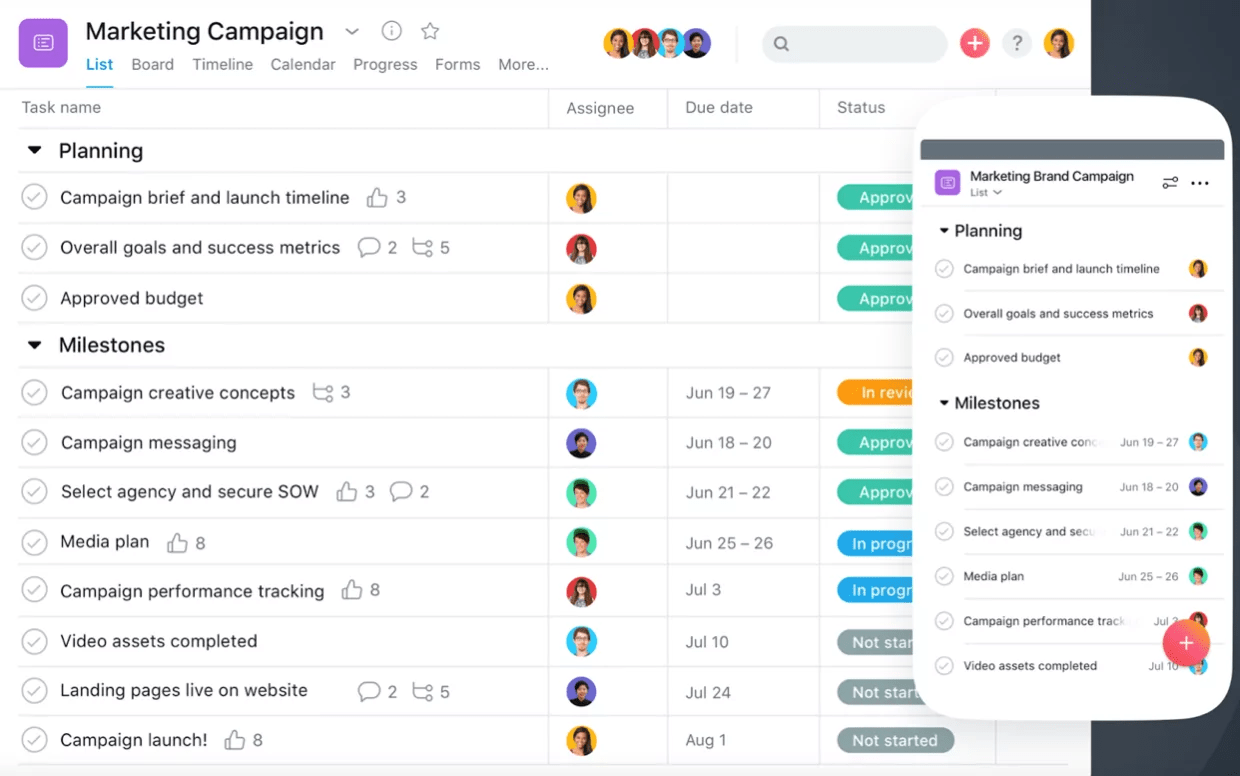
A true heavyweight in the world of project management tools, Asana is widely used by large teams that rely on continuous communication. It revolutionizes team coordination and optimizes workflows with its robust visual tools.
The Workflow Builder enables team leaders and project managers to set up processes, report progress, and share updates across teams. It allows the creation of Rules to automate business processes like forms for organized requests and syncing with other commonly used tools for seamless data integration.
With a focus on clarity and organization, Asana counters the “chaos” that can arise in bustling work environments. Its mission is to provide a coherent space where teams can easily collaborate, assign tasks, and monitor their progress. ?
*All listed prices refer to the yearly billing model
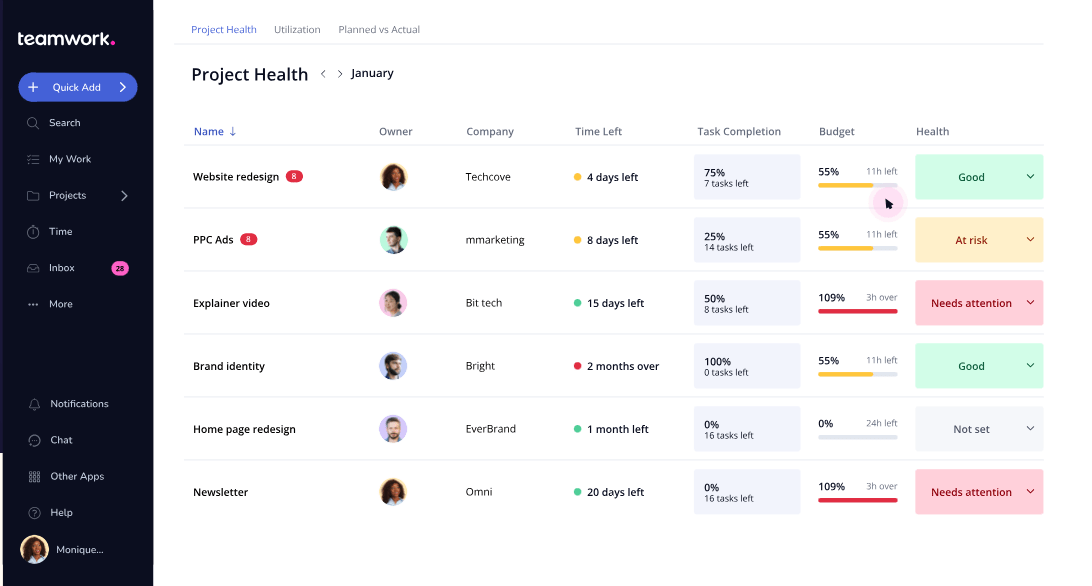
Teamwork is a cloud-based project management software offering highly customizable workflows and client permissions. This makes it a robust tool particularly fit for businesses that follow an agency or client services model, such as marketing agencies.
Teamwork lets you invite an unlimited number of clients, and even freelancers, into your projects. They aren’t just observers—they’re active contributors, capable of commenting, logging time, and more. Customized permissions let you guide each participant’s level of access, ensuring a smooth collaboration process.
*All listed prices refer to the yearly billing model
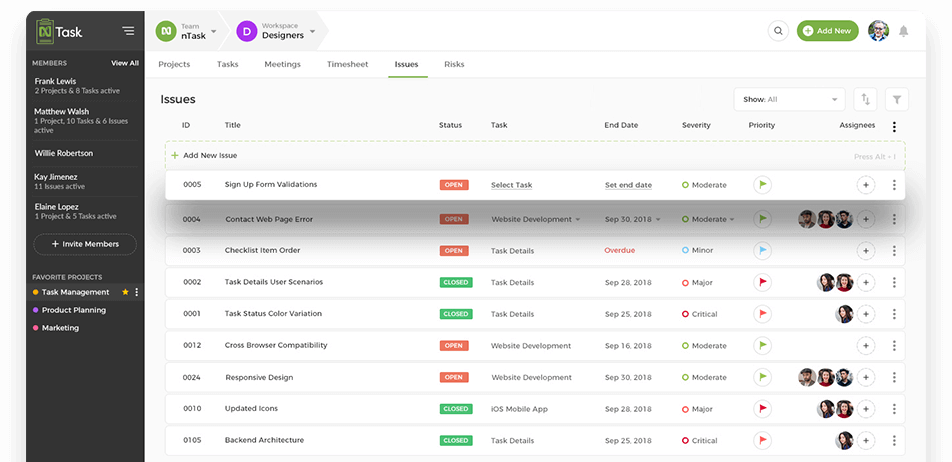
nTask aims to simplify the process of issue tracking and risk management within project workflows, making them more transparent and manageable.
With the ability to assign status and priority levels, the platform ensures everyone stays informed about ongoing or closed issues. This helps teams identify potential roadblocks early and devise effective strategies for addressing them.
nTask is also excellent at streamlining your budget management with its innovative billing methods. You can set fixed fees or hourly rates per task or resource, creating a billing approach tailored to your project’s needs. This allows you to focus more on task development while keeping an eye on your project’s financial health.
*All listed prices refer to the yearly billing model

With its visual appeal and easy-to-navigate Kanban-style design, Trello’s simplicity and adaptability make it the software of choice, even for those new to project management tools.
One distinguishing feature of Trello is its no-code automation tool called Butler. It allows you to create rules, buttons, and commands that streamline and automate almost any action within Trello. For example, Butler can automatically move a task from a “To Do” list to “Doing,” set due dates, and add members to tasks.
With Trello, teams can share files, track timelines, and manage workloads. Although some other platforms have more advanced project management features, Trello is an excellent option for small teams and simpler projects.
*All listed prices refer to the yearly billing model
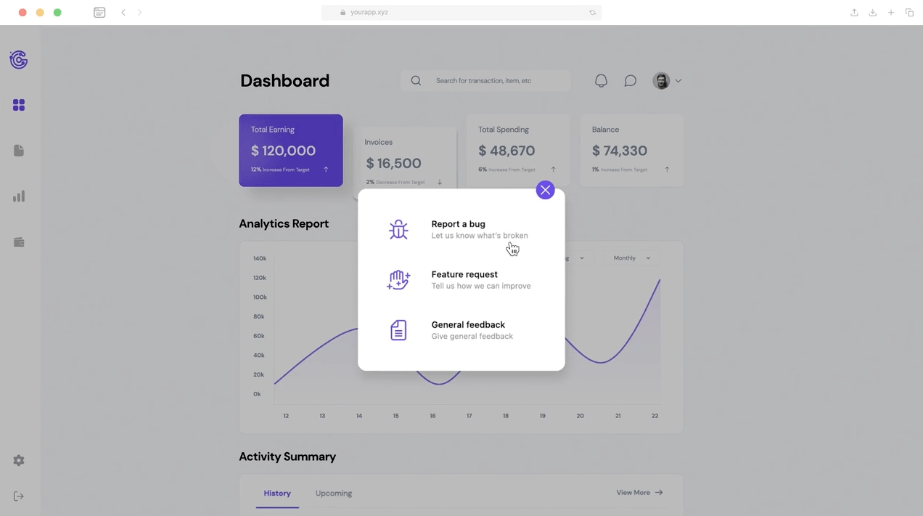
Created for software designers, developers, and businesses seeking a centralized project management system, Userback is a feedback and bug-reporting platform that lives up to its name by “putting the user back in development.” It empowers users with intuitive feedback tools and supports development teams with precise bug and issue reporting. ?
With Userback, you can gather meticulous feedback through annotated screenshots and video recordings. By capturing every click, zoom, and resizing action, Userback ensures an in-depth understanding of how users interact with your software. This significantly improves the responsiveness of the development process, ultimately driving customer success.
*All listed prices refer to the yearly billing model

Freshservice (developed by Freshworks) provides nifty tools for effectively managing IT service desk operations. This encompasses everything from incident, change, and service requests to more complex IT operations management. With Freshservice, IT teams can visualize and manage their workflow from a single dashboard.
Freshservice employs AI to predict project outcomes and overdue tasks by learning from previous task patterns and performance metrics, enabling faster incident resolutions. It also optimizes support teams’ productivity with intelligent suggestions for agents, reducing ticket handling time and enhancing overall customer satisfaction. ?
*All listed prices refer to the yearly billing model
Each of these 10 excellent YouTrack alternatives comes packed with a robust set of features and capabilities. Whether it’s a comprehensive solution like ClickUp that caters to a broad spectrum of project management needs, or a specialized tool adept at issue tracking or collaboration, the market is rich with options.
The right software can make all the difference in managing your projects effectively and effortlessly. Try ClickUp and experience the best collaboration and project management tools!
© 2025 ClickUp